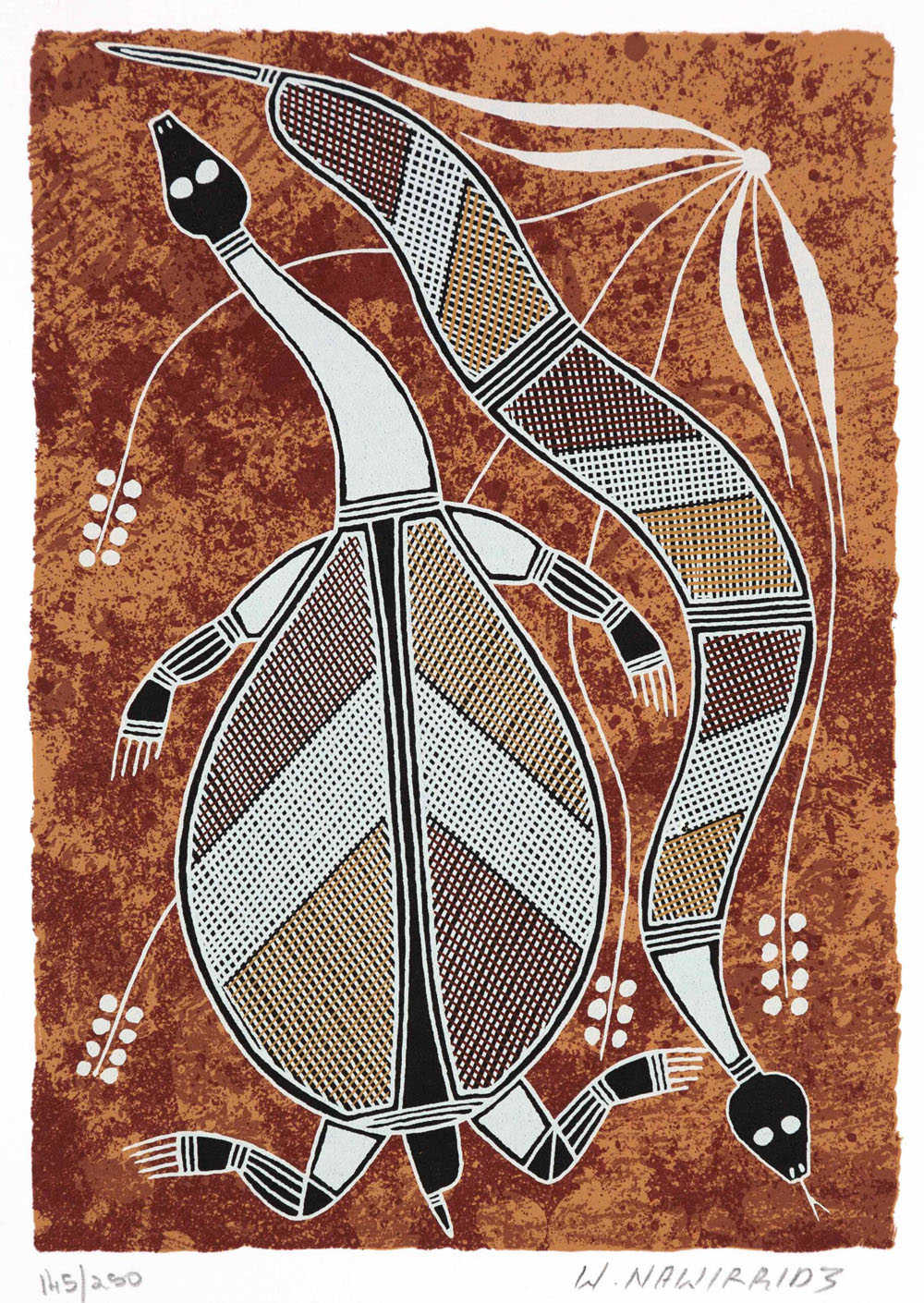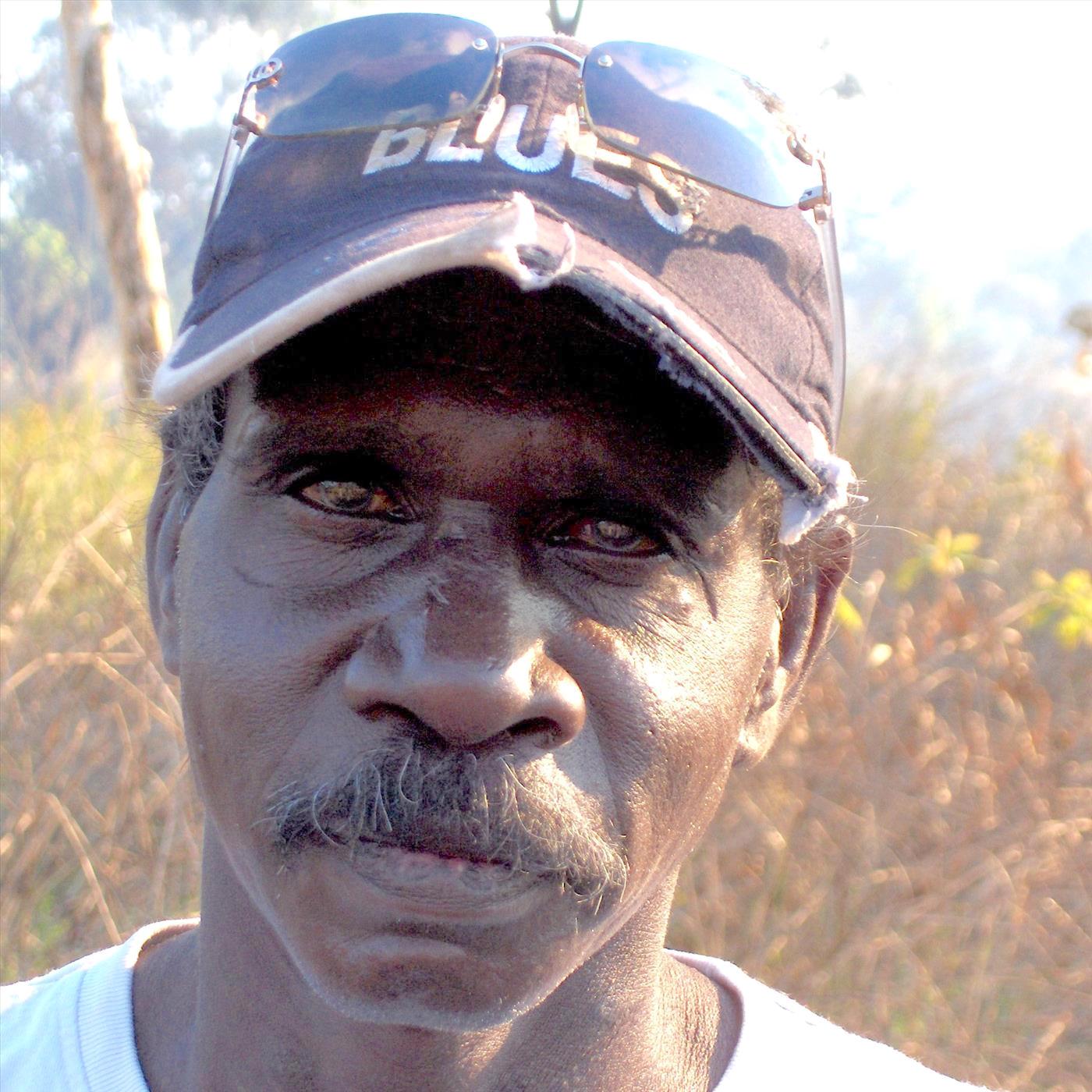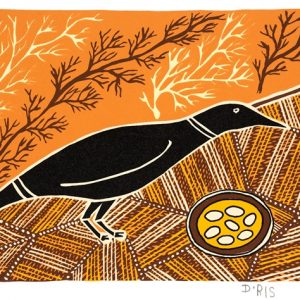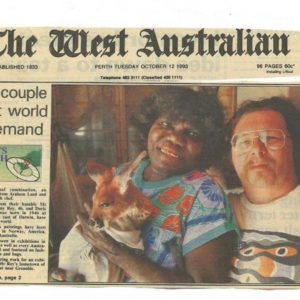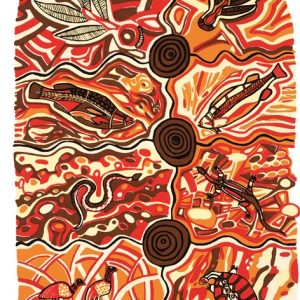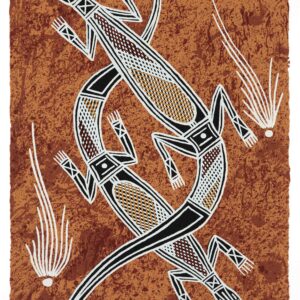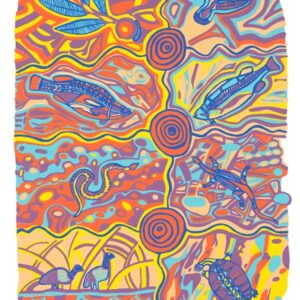Description
- Artist: Wilfred Nawirridj
- Language group: Kunwinjku
- Clan: Wurrik
- Lived: 1961 – 2011
- Screenprint – Edition of 250
- Size of image 16 x 23 cm
- Size of paper 25 x 35 cm
- Size of print with mat board and foamcore backing 28 x 38 cm
Wilfred Nawirridj was a senior artist at Injalak and a former president of the Association. He was the most senior tour guide for rock art interpretive tours in the region and was often interviewed by film crews and researchers because of his valued knowledge. Wilfred held various positions on the Injalak Executive and has represented Injalak at numerous exhibitions and conferences, including the 2008 World Archaeology Conference in Dublin. He was married to weaver Heather Nawirridj and has two children, Sharon and Lenny.
Group exhibitions
- 2010 Ancient Lands, “Australia Indigenous Art in Israel ” Tel Aviv Israel’
- 2009 Ochre and Rust, Indigenart, Perth WA
- 2008 Sex Spirits & Sorcery, Mossenson Gallery, Melbourne, VIC
- 2008 National Aboriginal Torres Strait Islander Art Award ( NATSIAA ), MAGNT, Darwin
- 2007 Ngadirriwilkne To Make A Mark, Port Jackson Press Melbourne Vic
- 2007 Ochre Paintings from Western Arnhem Land, Batchelor Institute Coomalie NT
- 2007 The Injalak Hill Suite, Abiriginal & Pacific Art Gallery Danks St,Sydney NSW
- 2007 Above & Beyond, Caruana & Reid Fine Art, Elizabeth Bay, NSW
- 2006 Inspired by Injalak, Port Jackson Press Melbourne, Vic
- 2006 Wet & Dry, Mossenson – Indigenart Gallery, Perth WA
- 2006 24th National Aboriginal & Torres Strait Islander Art Award, MAGNT Darwin, NT
- 2005 Art of the Stone Country, Dec,, Darwin, NT
Collections
- Museum Victoria
Bibliography
- Louise Hamby, ‘Twined Together: Kunmadj njalehnjaleken’, Injalak Arts and Crafts Association, 2005
Kunwinjku art is part of the oldest continuous art tradition in the world. Ancestors of today’s artists have been painting the rock walls of West Arnhem Land for tens of thousands of years. The traditional palette of white, red, yellow and black comes from the ochre that naturally occurs in the region, although contemporary artists sometimes choose to paint in acrylics as well. Kunwinjku artists famously paint using either the traditional rarrk hatching technique, or the more contemporary and complex cross hatching technique which has been adapted from ceremonial painting. These lines are painted using a manyilk, which is a piece of sedge grass shaved down until only a few fibres remain.
Provenance: John Clark commissioned a set of 10 “Oenpelli Prints” in collaboration with Injalak Arts in 1999. The prints feature a range of classic themes.

